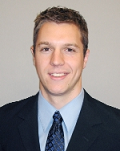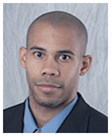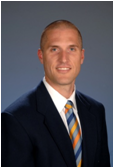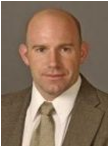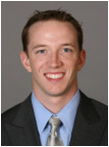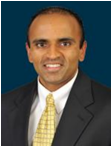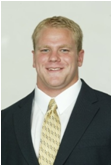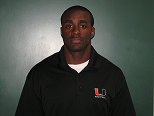
Wes Brown
What has been the biggest mistake you made early in your career?
Early on in my career I believe there were two major mistakes that I made which have led to me being a much better professional today. I paid less attention to the whole and focused more on the specific extremity/area that was injured. Taking the NASM Performance Enhancement and Corrective Exercise Specialist courses literally saved my career. It allowed me to examine everything from the ground up instead of limiting my focus. The second mistake I made goes hand in hand with my first mistake which was not respecting the cause of the recurrent injuries I saw in my basketball athletes. Accepting that an athlete had tendinitis in high school and was going to deal with it some while they were an athlete under my care should have not been my thought process. The NASM courses allowed me to think "tendinitis will not be a problem for you while I am responsible for your care". With the preventative screening and program implementation I now use, it is my firm belief that most of my athletes are better able to handle the stresses of participation and return much quicker from injury when injury does occur.
What advice would you give for young professionals looking to follow in your footsteps?
There are a few things that I repeatedly tell the Athletic Training Students under my supervision that I think can be applied by everyone. First, strive to be the best possible. What I mean by that is this- look at what those at the pinnacle of the area you want to be in are doing. For me that was the NBA. I researched and talked with people about what sports medicine care is like at that level and I try to mirror that in terms of my skill set and knowledge necessary for that job. My thought process is "if the athletes I take care of here are lucky enough to reach that level, then they will have already experienced to a degree what that level of care should be like". The second thing I recommend is working on your people skills. You can know all the information in the world, but your athletes won't care or come to you if they don't like you as a person or think that you care. I have seen many people not be able to reach their potential simply because of their inability to effectively interact positively with people. We are in a customer service medical field. If our patients are not happy with any facet of their care, then we need to try and analyze whether their claims deserve merit and thus action to improve the problem. And finally never stop learning. The day you stop learning is the day you start becoming ineffective at your job. There is always something to be learned and I try to learn as much as I can as often as I can. I try to learn at least one bit of information that I didn't previously know every day.
How do you address knee pain in the basketball athlete?
Through the implementation of the corrective exercise screen and corrective exercise program, the incidence of knee pain due to tendinitis in my athletes is virtually non-existent except in those athletes whom receive a very high number of reps in practice and games. Usually when pain occurs in these individuals, reducing their practice reps is the single most important variable that is changed. When they are initially screened, the corrective exercise program the athletes receive is designed to address any flexibility and strength shortcomings, as well as improper muscle firing. For example if the athlete has tight calf musculature, the knee may be limited in its ability to gain more range of motion and absorb shock as they land from a jump putting more stress on an area that is already under enough load based on the normal biomechanics of landing from a jump. I would focus on the flexibility of that musculature and then improve the strength of the dorsiflexors. Nearly all exercises have a concentric, isometric, and longer eccentric phase included in each repetition. Landing and controlling the body's load eccentrically provides the most stress to their knees and thus causes the increases in symptoms they commonly experience. I also use a Kinesiotaping technique that positions the inferior pole of the patellar inferiorly. To date I have had a 100% success rate in reducing the pain and allowing more normal function in all athletes I have applied this technique to. Myofascial release to the gastroc-soleus complex and quadriceps musculature my also be necessitated and this is accomplished with the foam roller before stretching. I often perform additional myofascial release with my hands to ensure specific spots are addressed that the foam roller may not provide enough release to.
Name some strength training/rehab/nutrition gimmicks that basketball players and coaches should avoid?
There are a variety of devices and techniques out there being used by our athletes that we will probably never convince them to stop using. I want to address one which I experienced here at the University of Miami. There is a product called "Power Balance" which is selling their product mainly in the form of a bracelet. Our athletes have all went out and purchased it thinking it has the ability to "magically" balance their body and make them stronger. Now if something scientifically prevents the incidence of injury I will see to it that my athletes are able to receive that technique, equipment, or technology. However, the power balance bracelets did not decrease the symptoms of tendinitis, a disc bulge, or the acute ankle sprain suffered by my athletes. Before these injuries, I had "spirited" debates with some of the athletes over why they should continue to come for corrective exercises since they felt the power balance bracelets essentially did the same thing the exercises were doing. They soon got their answer to those questions and began doing their exercises again; along with the exercises for the injuries they were now suffering from. Am I saying the power balance bracelets don't work. By all means no. What I am saying is that no matter what they put on or into their body; they still must be able to react to the forces placed on their body. Through proper motor programming and technique they will be better able to handle these demands.

